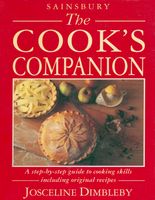Label
All
0
Clear all filters
Save 25% on ckbk Premium Membership with code FALLFLAVORS 🍁
Cutting Board
Appears in
Published 1991
The best wooden boards are heavy and thick, to act as good shock absorbers, and ideally made from one piece of densely grained wood (strips of wood glued together can eventually come apart); wooden surfaces are better for cutting and chopping because they will not blunt the knife. However, disadvantages of wood are many: it is porous and so absorbs moisture which can cause warping and cracking, and it can retain stains, odours and bacteria. It is important to wash wooden boards well, scrubbing in the direction of the grain. Rinse and dry well. Polyethylene cutting boards, available in many sizes, are more hygienic than wood because they can be thoroughly cleaned, even in a dishwasher, and are soft enough to avoid blunting a knife.
Become a Premium Member to access this page
Unlimited, ad-free access to hundreds of the world’s best cookbooks
Over 160,000 recipes with thousands more added every month
Recommended by leading chefs and food writers
Powerful search filters to match your tastes
Create collections and add reviews or private notes to any recipe
Swipe to browse each cookbook from cover-to-cover
Manage your subscription via the My Membership page
Best value
Part of
Advertisement
Related Recipes
-
-
-
-
Related Reference
-
-
-
-
Advertisement
The licensor does not allow printing of this title



